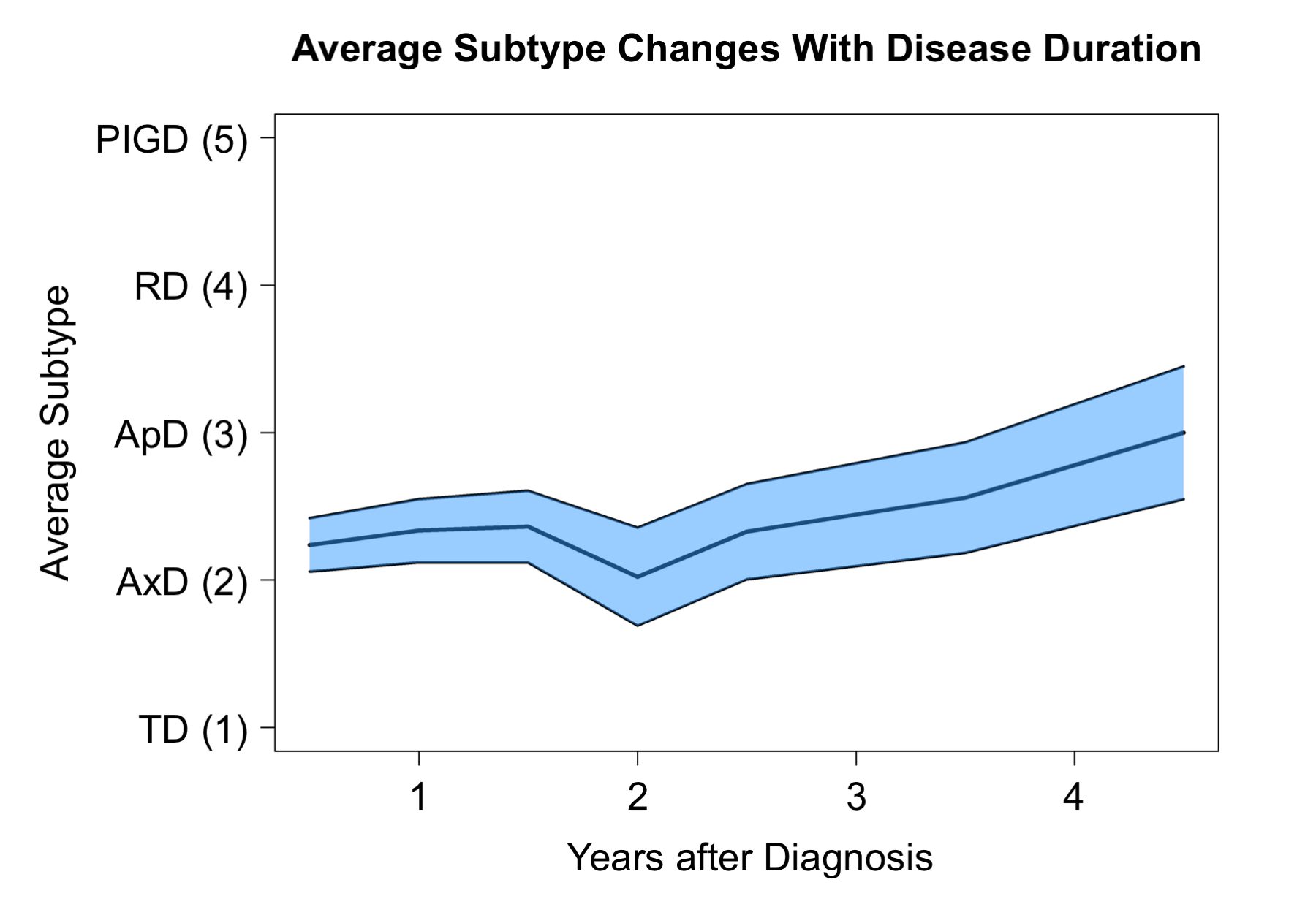Session Information
Date: Wednesday, June 7, 2017
Session Title: Phenomenology and Clinical Assessment Of Movement Disorders
Session Time: 1:15pm-2:45pm
Location: Exhibit Hall C
Objective: To examine changes in the designation of motor subtypes in Parkinson’s disease (PD) patients within five years of diagnosis.
Background: Distinct motor subtypes of PD have been identified through both clinical observation and data-driven approaches. However, the extent to which motor subtypes are mutable during disease progression is not fully known.
Methods: We used the Parkinson’s Progression Markers Initiative database of 423 newly diagnosed PD patients to identify unique motor subtypes. Specifically, we found distinct 1) Tremor Dominant (TD), 2) Axial-dominant (AxD), 3) Appendicular-dominant (ApD), 4) Rigidity-dominant (RD), and 5) Postural Instability and Gait Disorder (PIGD) groups. We converted these categories to an ordinal scale by assigning the subtypes numerical values 1 through 5, as they progressed on the spectrum between TD to PIGD respectively. Next, for each off-medication motor assessment time point, we assigned patients to one of these five subtypes. Patients with consistent subtypes and patients with inconsistent subtypes were analyzed separately. For patients with inconsistent subtypes, we computed relative subtype frequencies over time using a bin width of 6 months to produce sample-level averages.
Results: The number of motor assessment time points for each patient ranged from 2 to 14 (M= 6.81, SD = 2.40). Subtypes for 54.8% of patients were consistent at every time point while 45.2% of patients fit criteria for at least two different subtypes across time points. A chi-square test suggests that subtype frequencies change over time, X2(25) = 42.01, p < 0.05. Using the numerical scale described above, a linear regression showed that average subtype increased with disease duration, R2 = 0.61, p < 0.05 [figure1]. In other words, on the spectrum from TD to PIGD, the cohort as a whole progressed away from a TD phenotype with disease progression. These results suggest that at least in early PD, motor subtypes may change or progress over time.
Conclusions: Early PD subtypes are stable for some patients and unstable for others. By frequency, more patients are classified as TD soon after diagnosis. There is an overall shift away from TD within the first five years of diagnosis. These results suggest that motor subtype designation may be influenced by disease duration.
To cite this abstract in AMA style:
R. Eisinger, D. Martinez-Ramirez, C. Hess, M. Okun, A. Gunduz. Changes in motor subtype designation of early Parkinson’s disease patients [abstract]. Mov Disord. 2017; 32 (suppl 2). https://www.mdsabstracts.org/abstract/changes-in-motor-subtype-designation-of-early-parkinsons-disease-patients/. Accessed December 29, 2025.« Back to 2017 International Congress
MDS Abstracts - https://www.mdsabstracts.org/abstract/changes-in-motor-subtype-designation-of-early-parkinsons-disease-patients/

